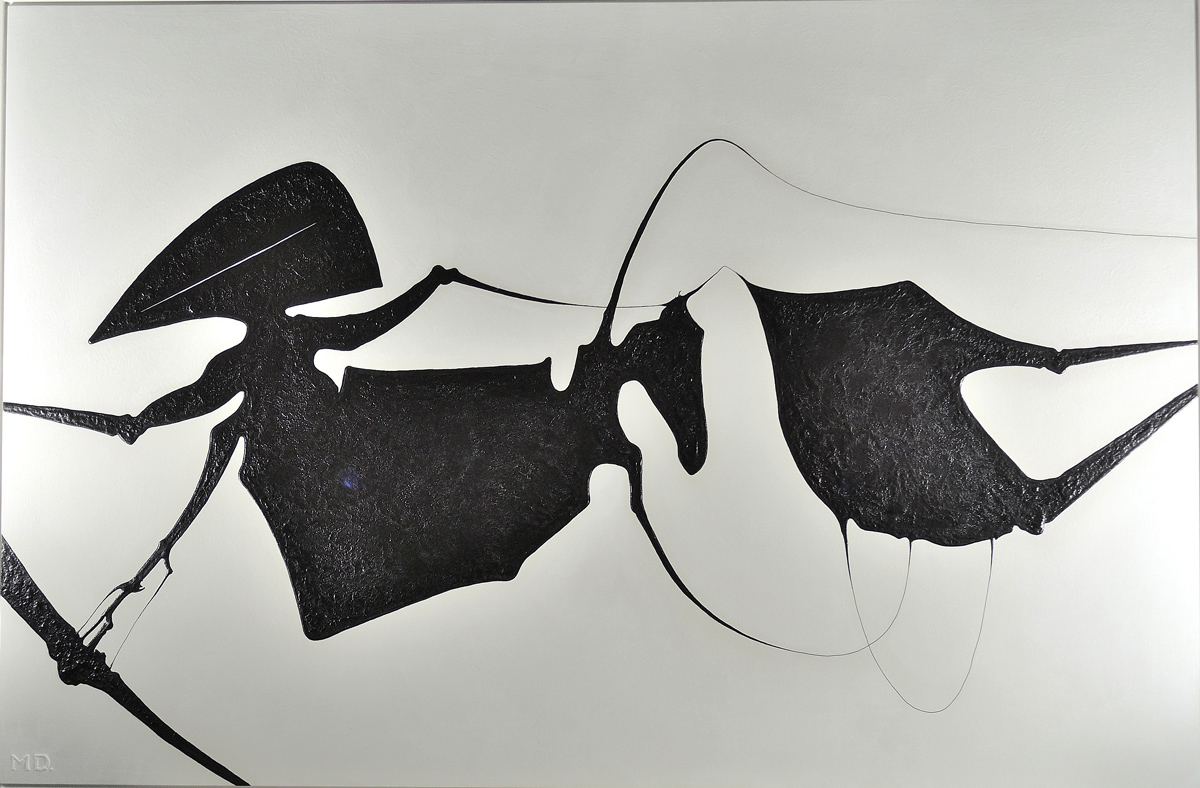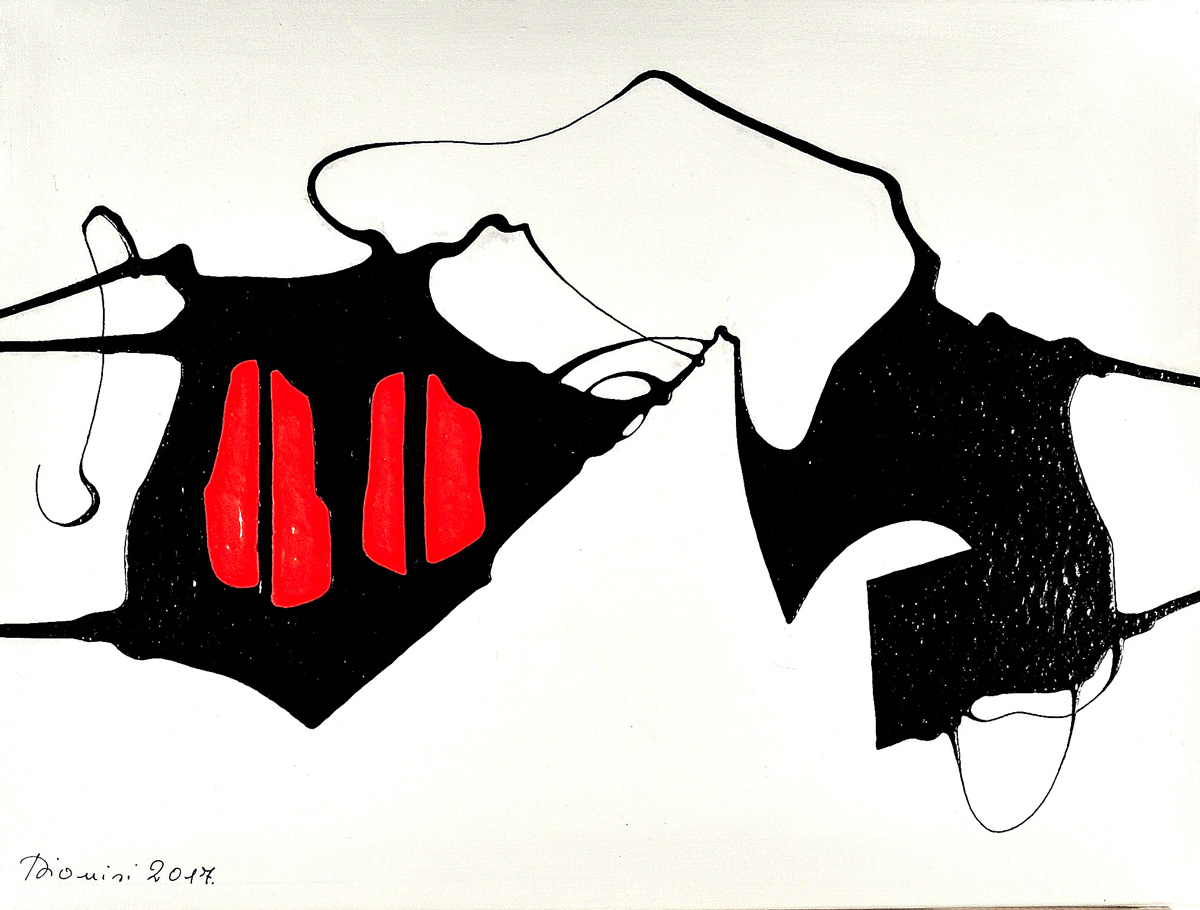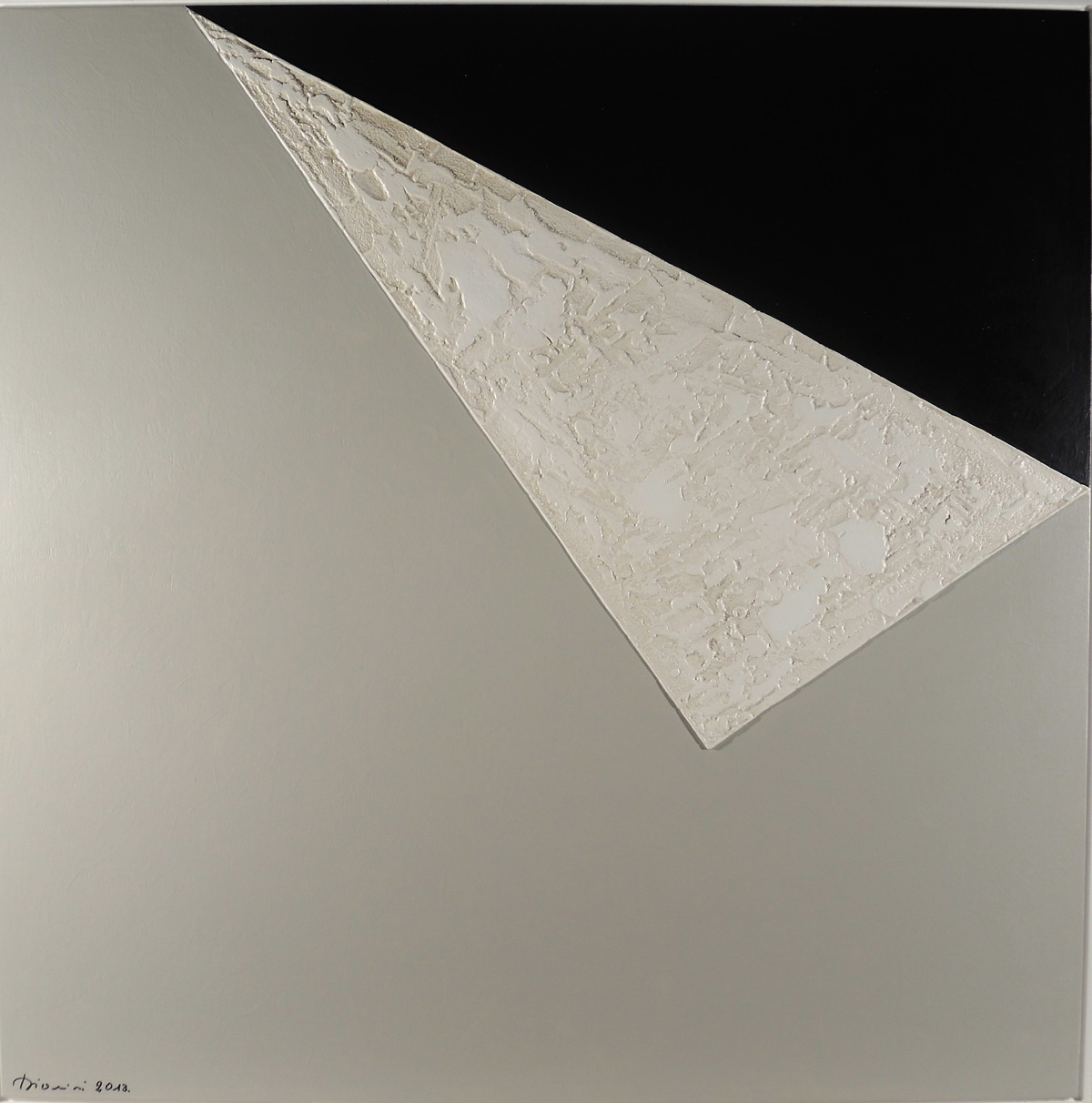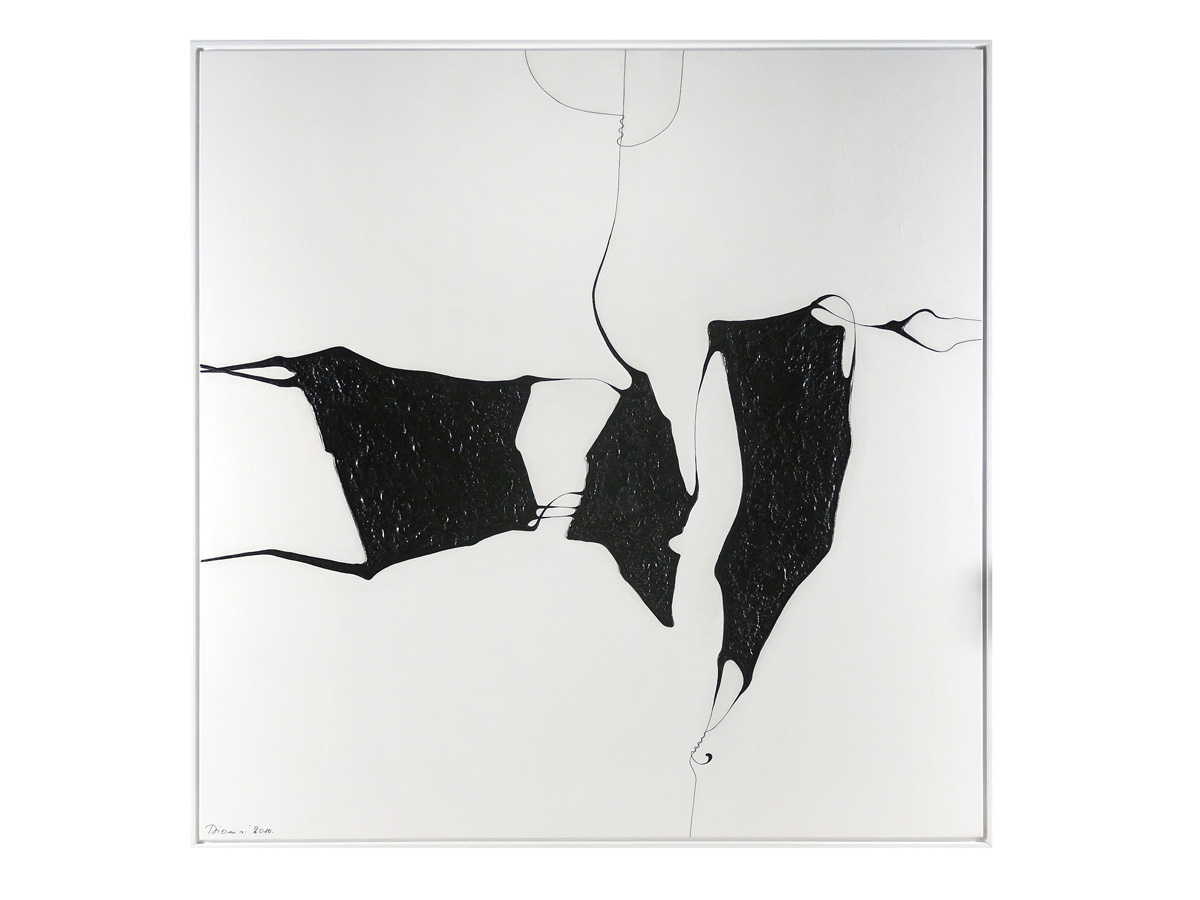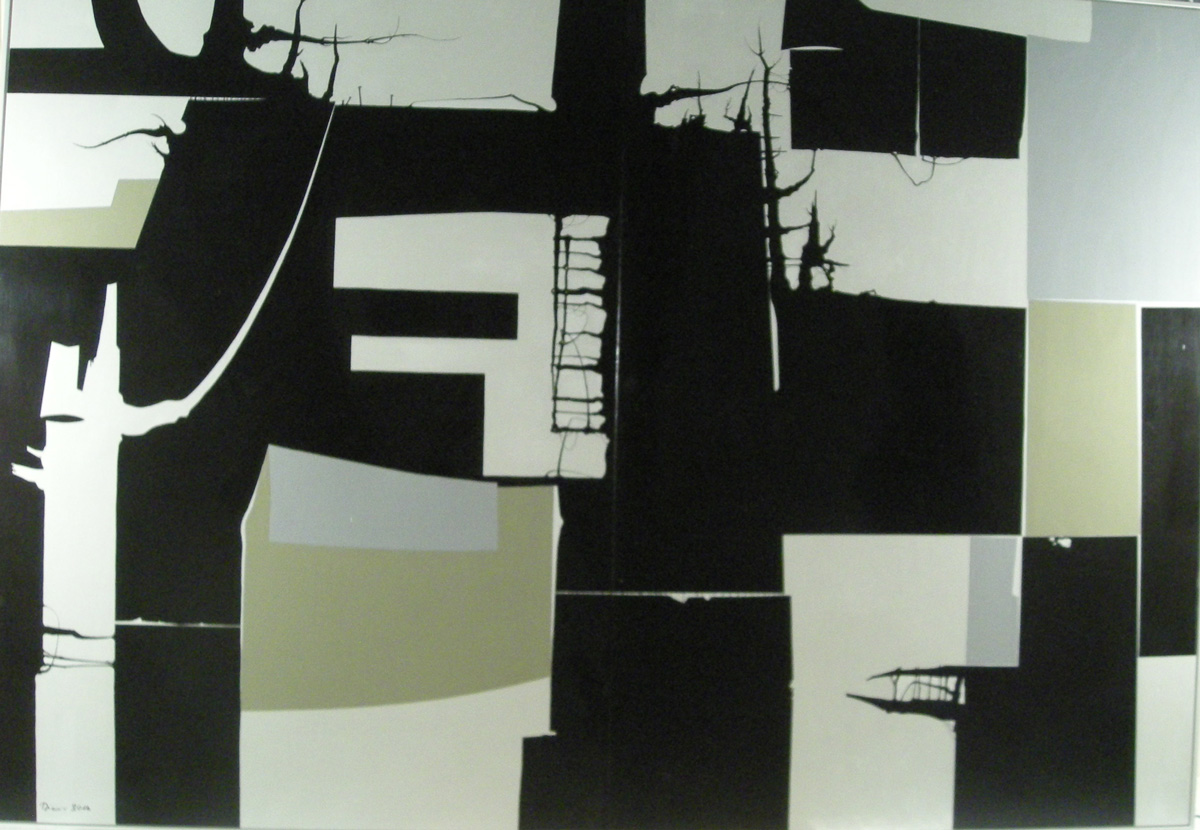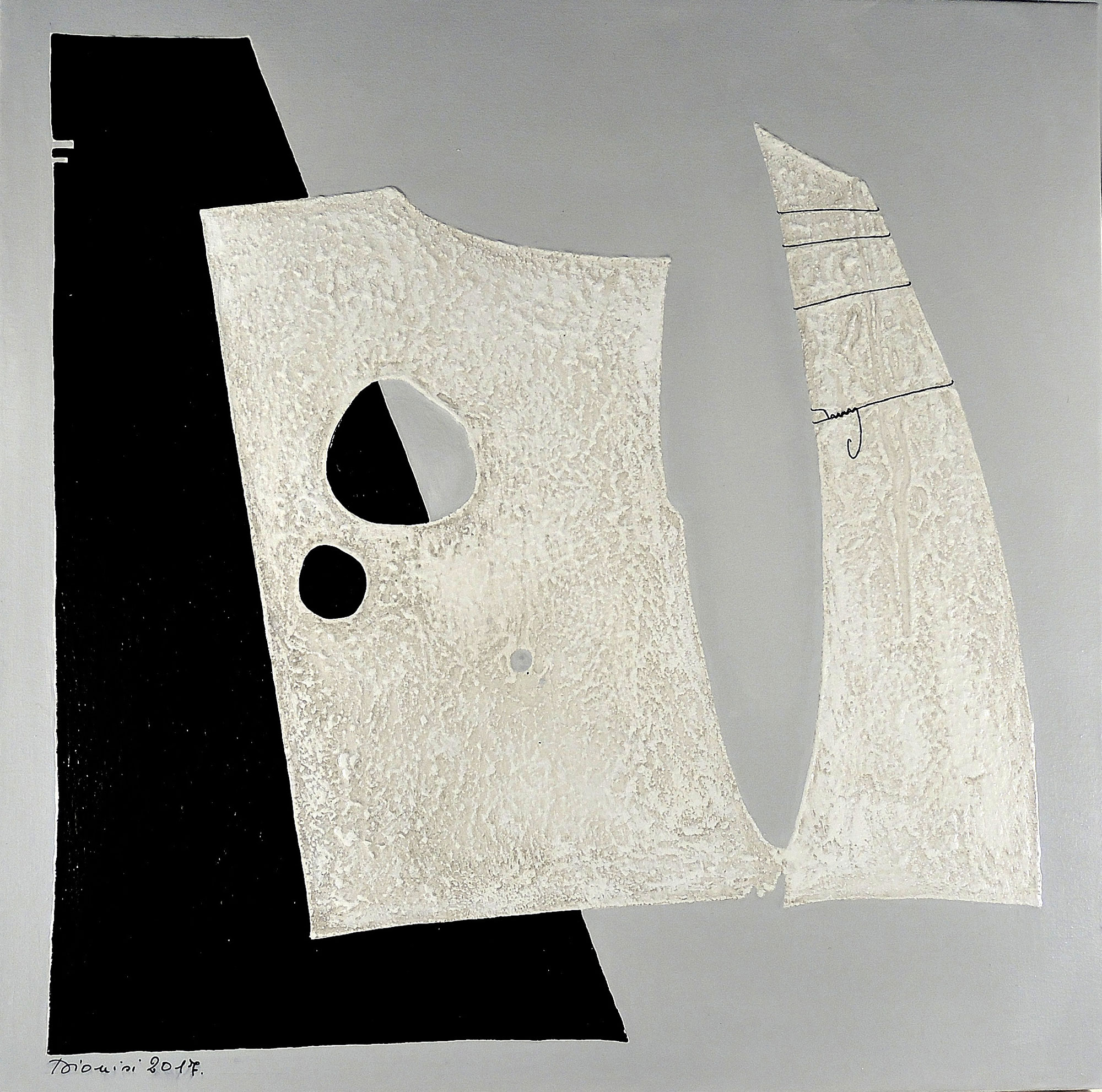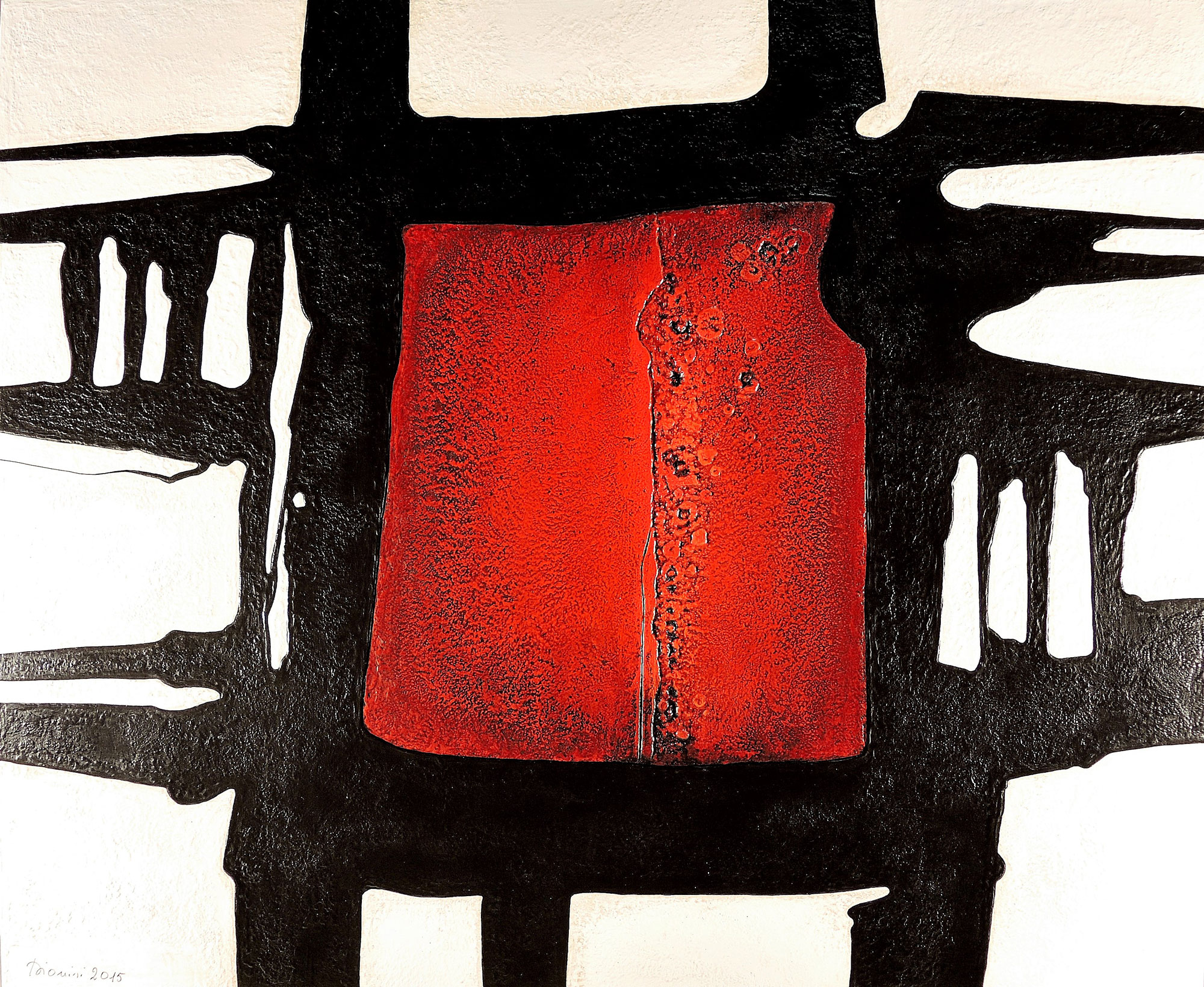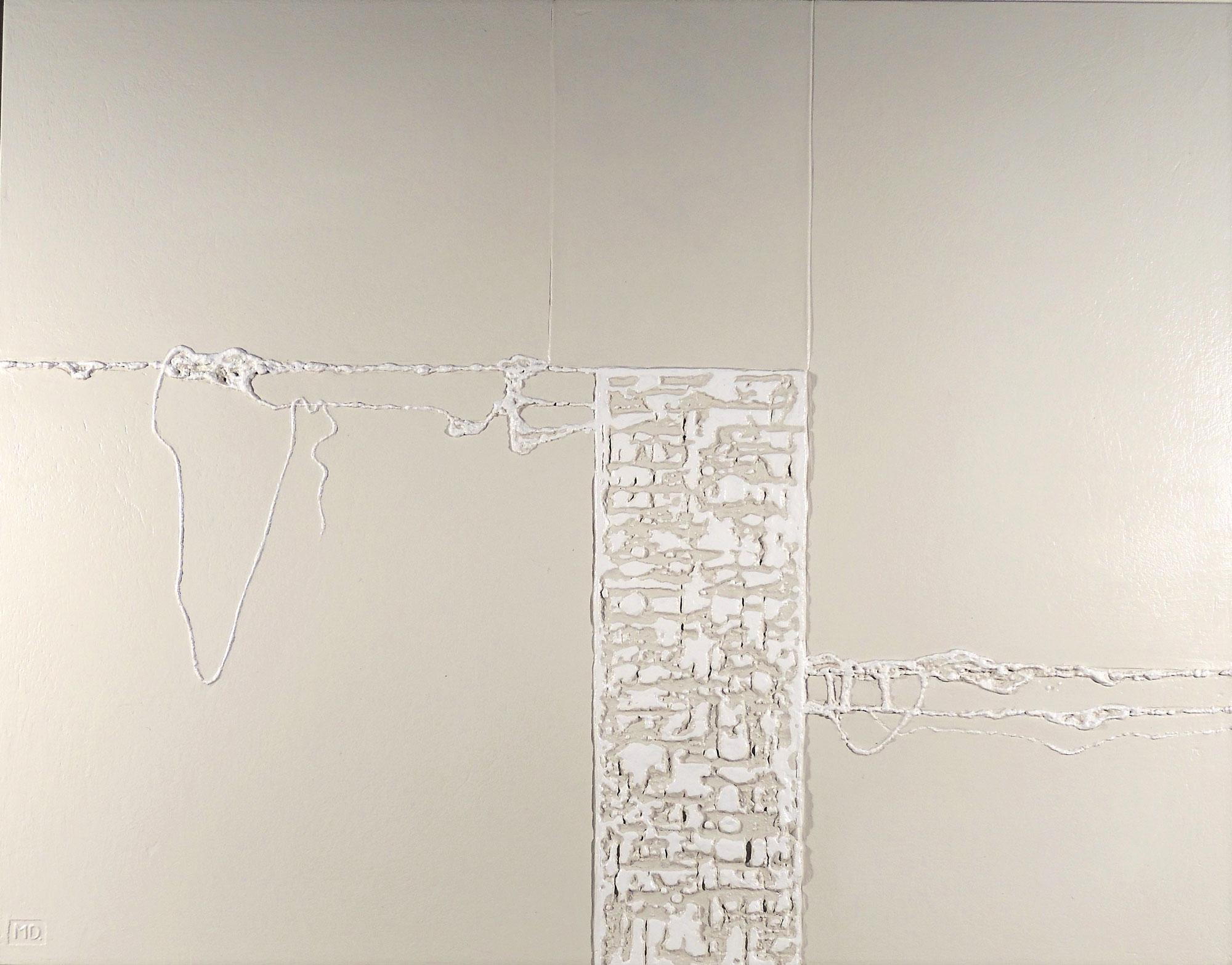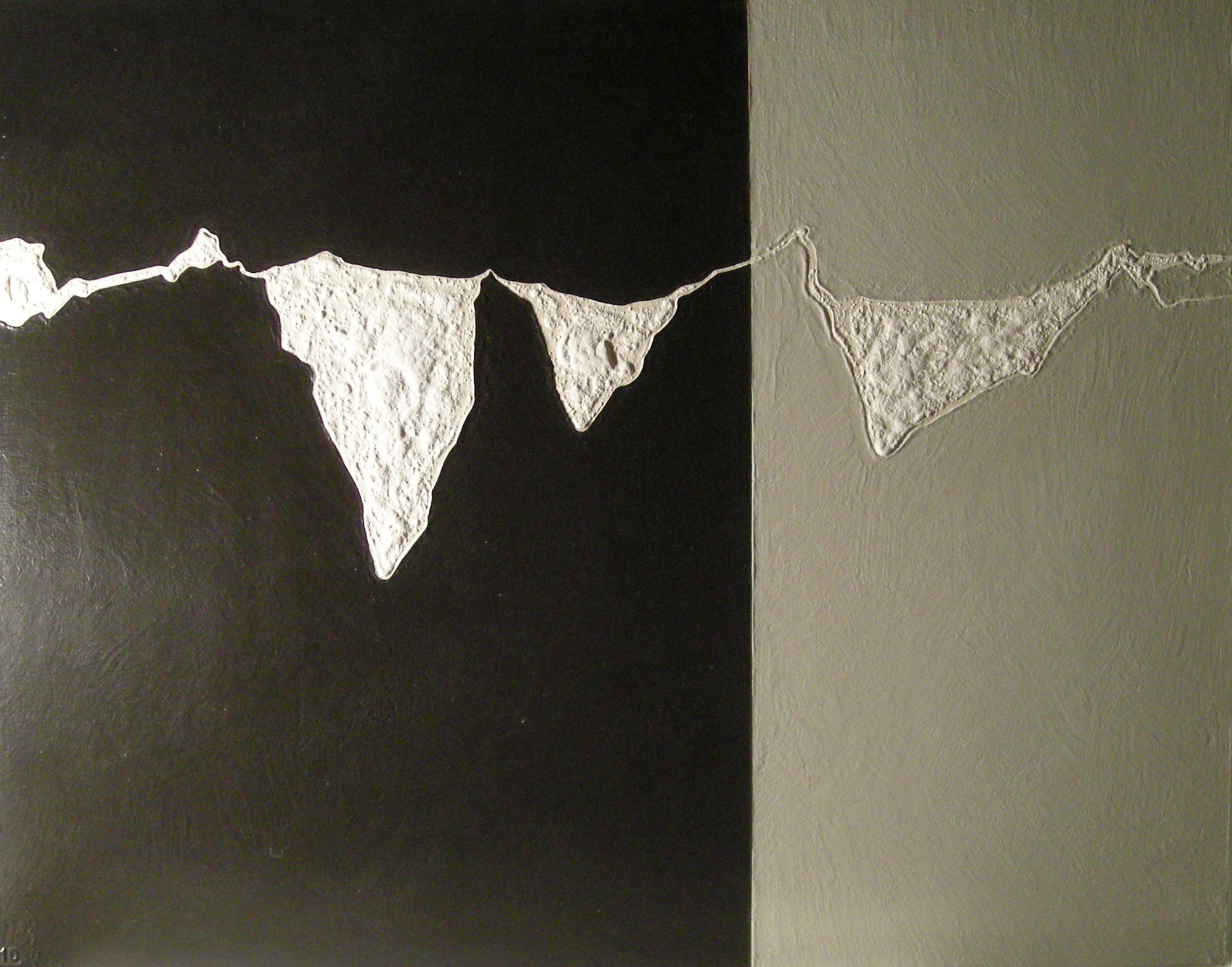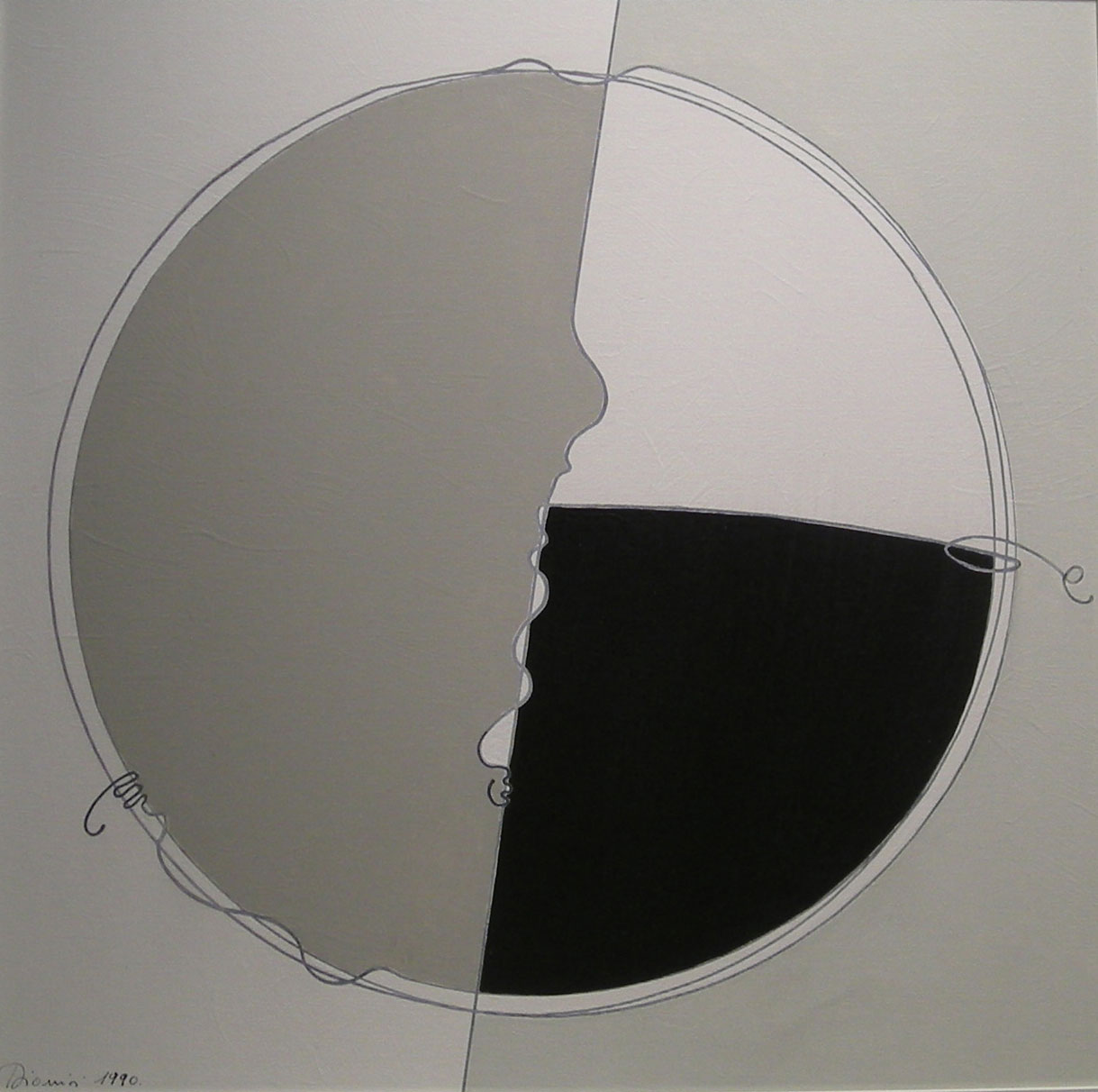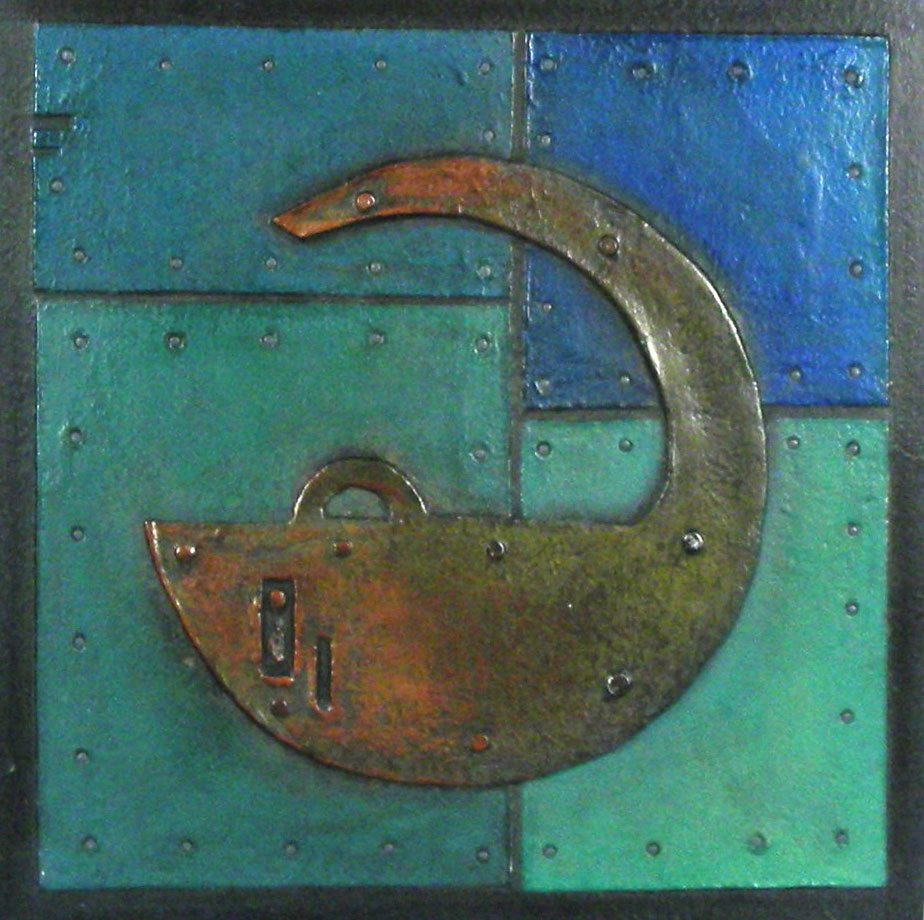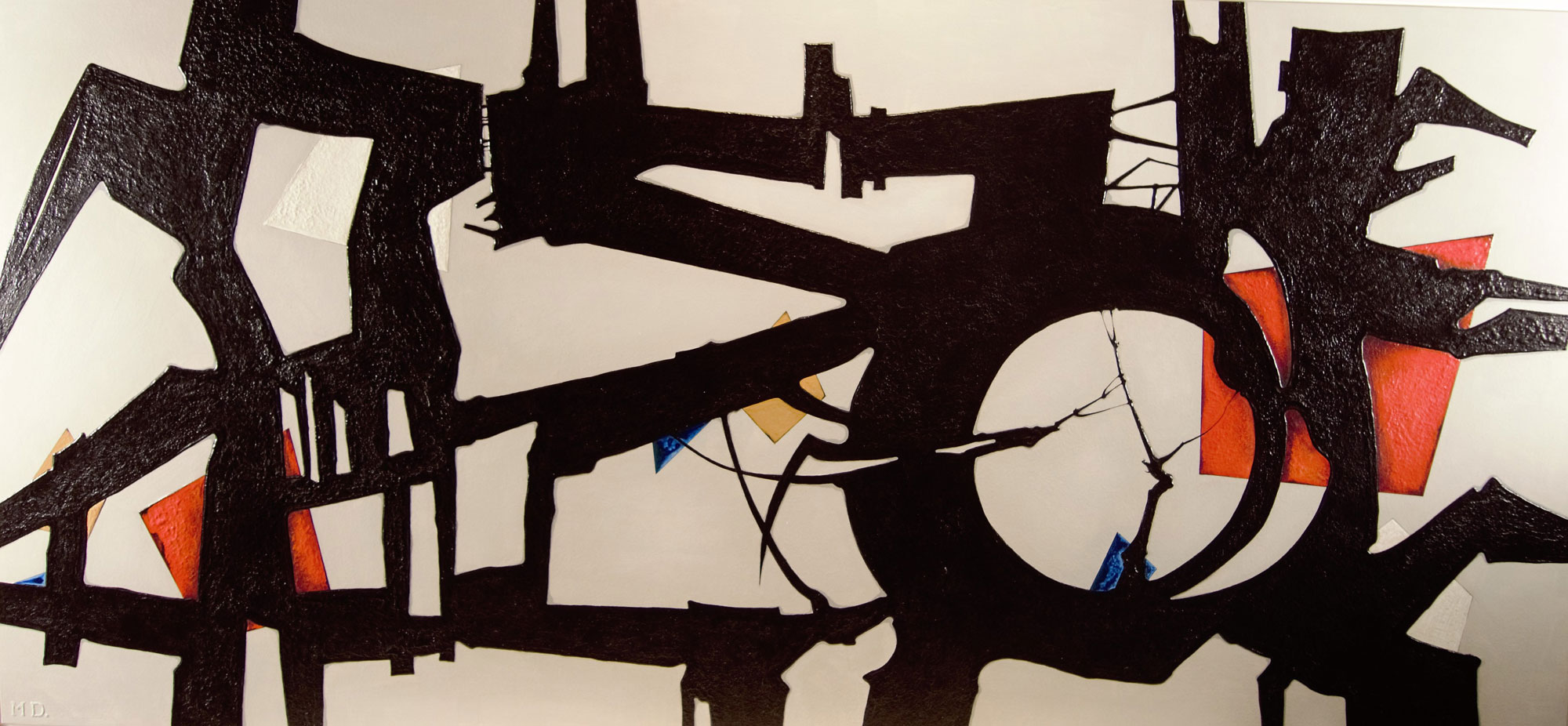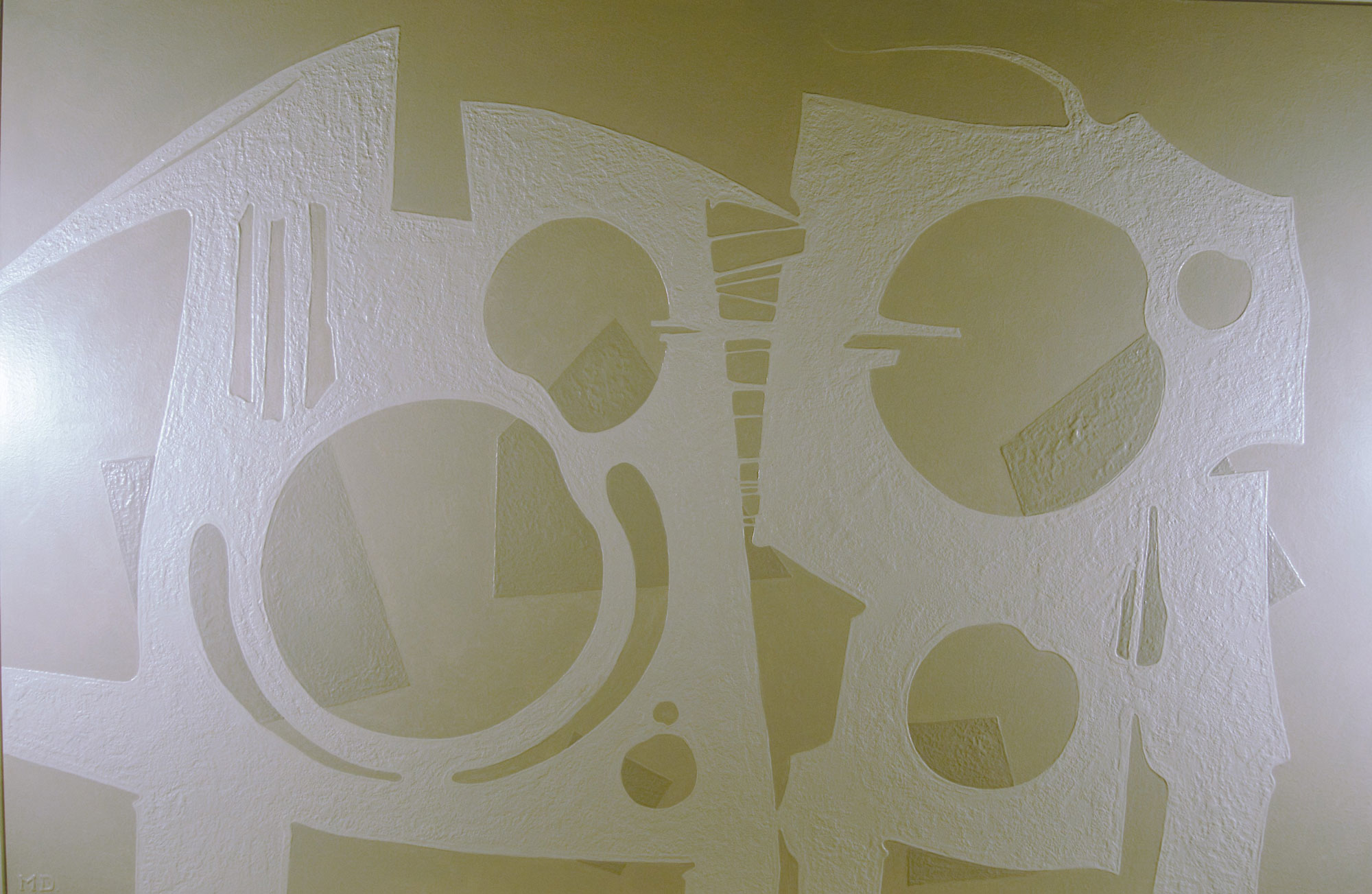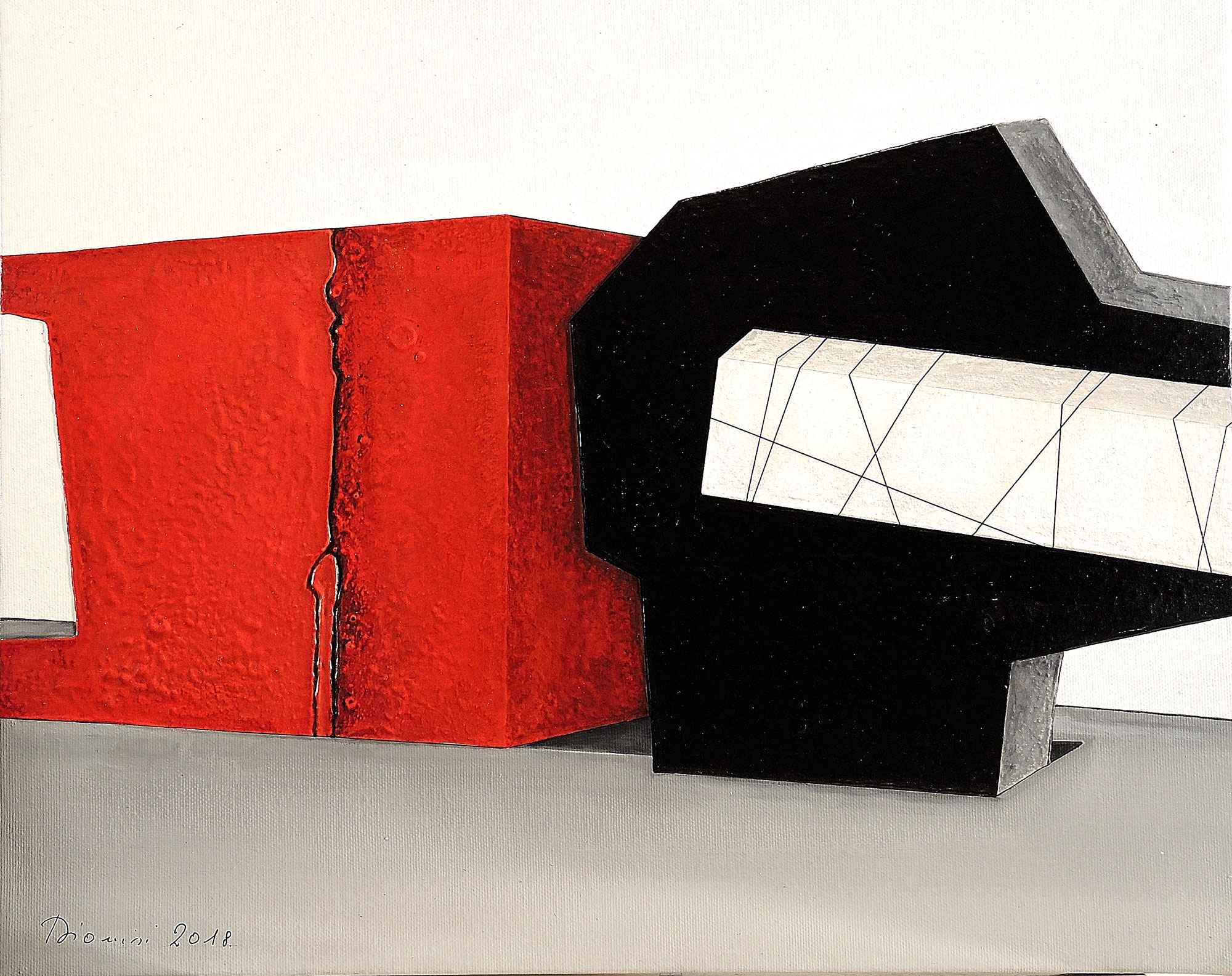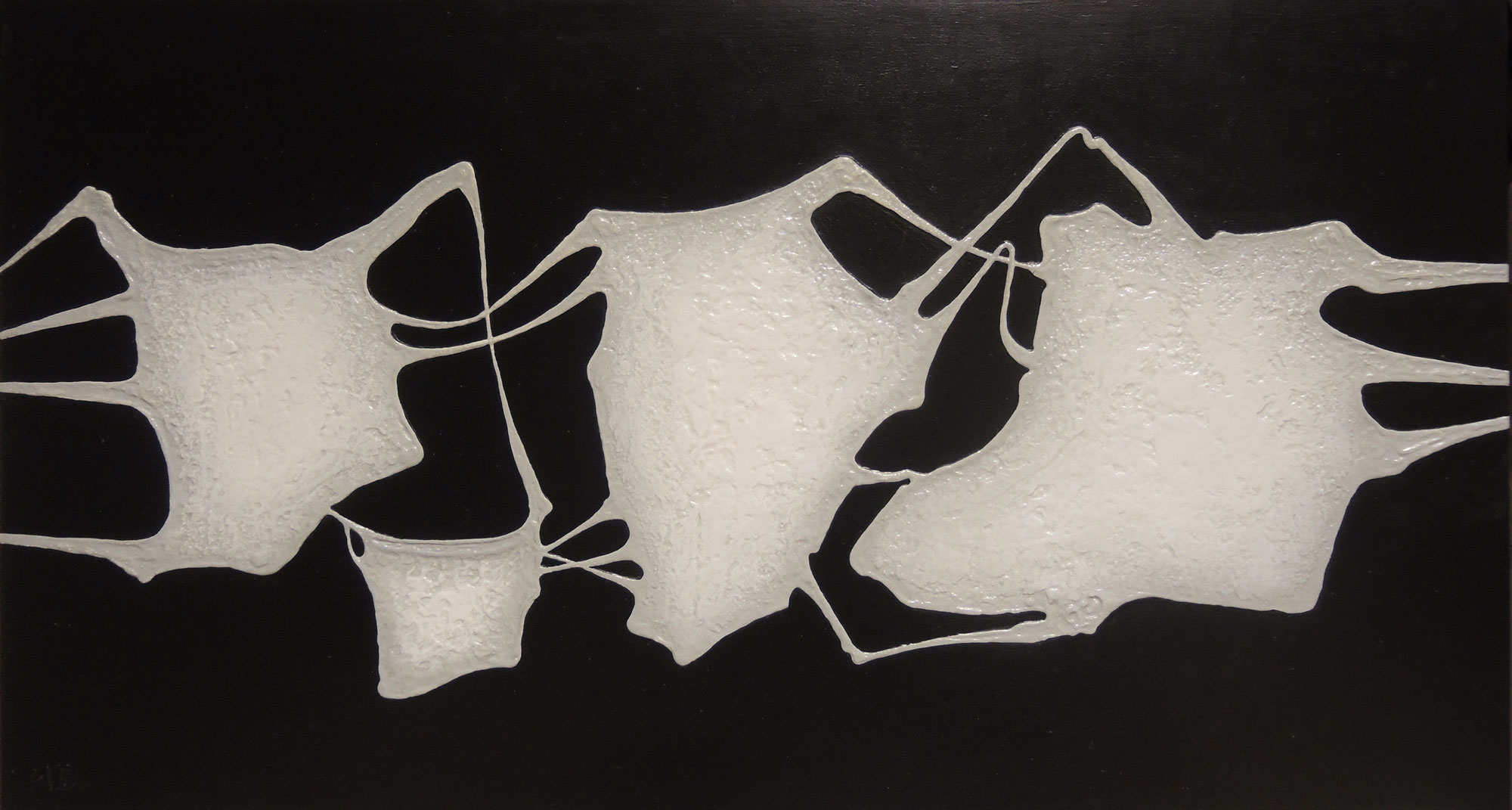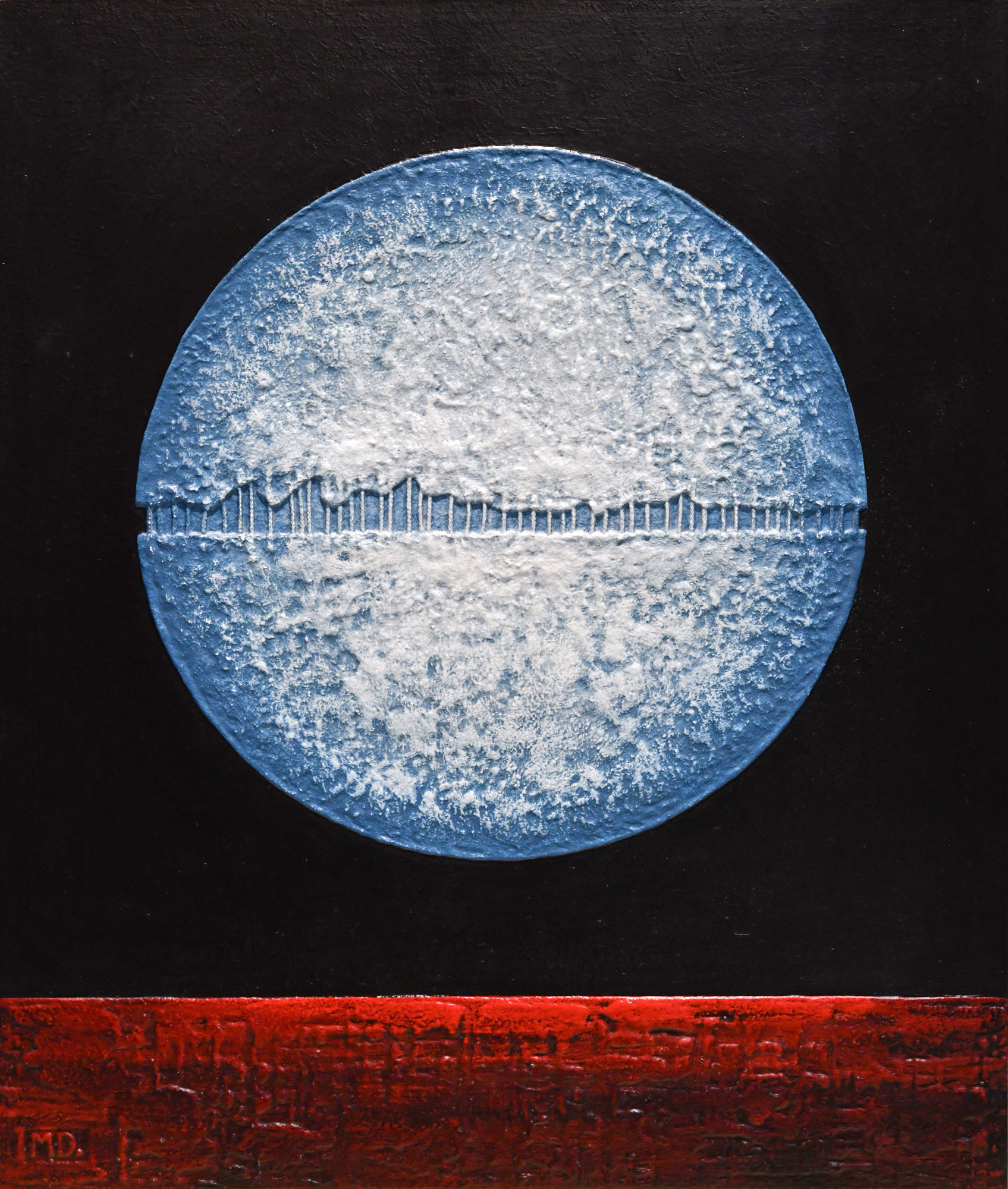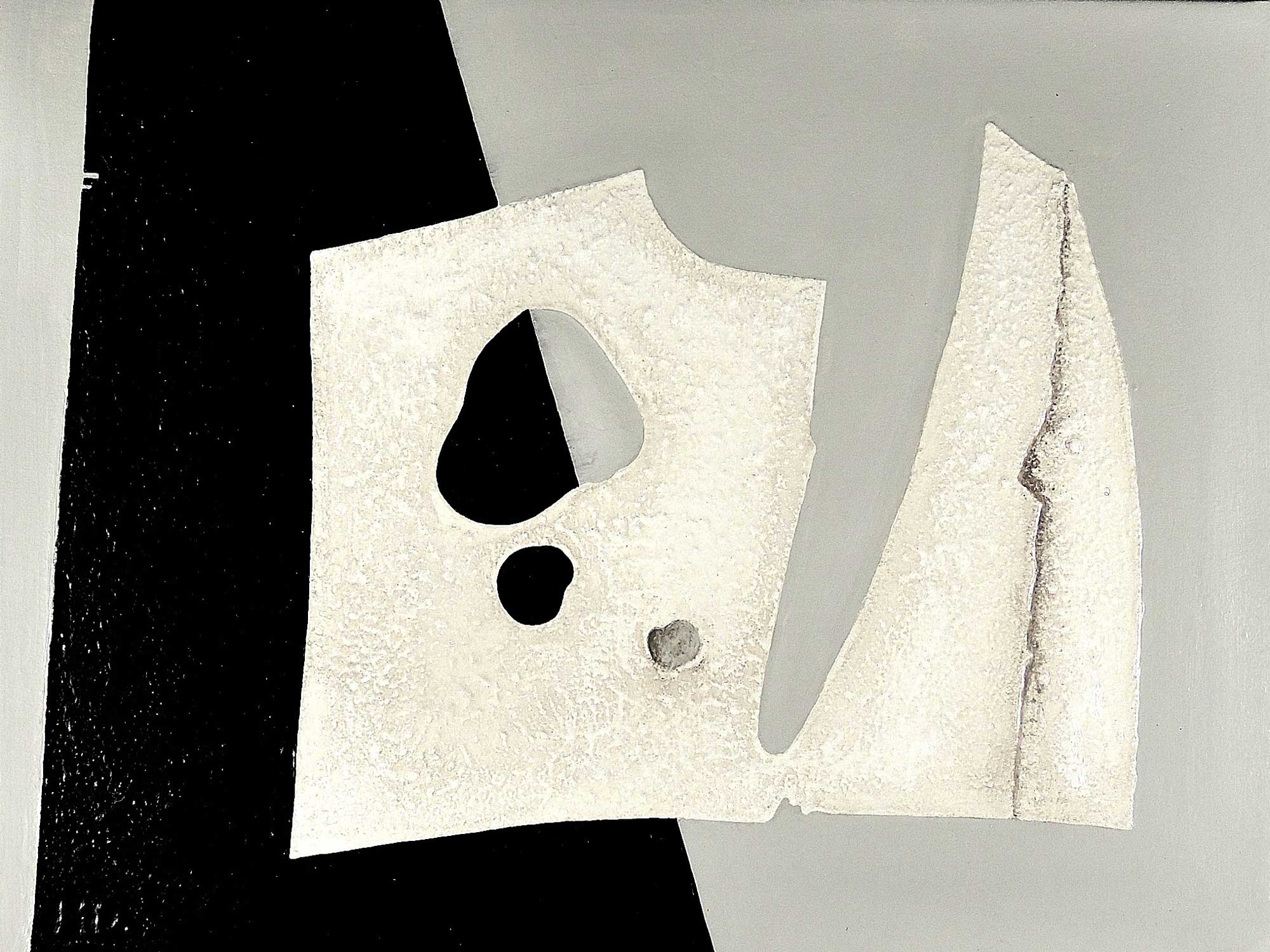Nota critica di Caprile
Le opere più recenti ripercorrono la medesima filosofia costruttiva che tiene conto del travaglio di un’intera esistenza con qualche ulteriore inserimento innovativo come la legatura di certi elementi a rilievo, come il ricorso al collage per sottolineare apporti successivi che si sommano in una progressiva crescita suggestiva verso l’osservatore. Comunque sia in Dionisi prevale sempre l’indagine profonda di un microcosmo che va a sondare da una parte la palpabile rugosità di un contrasto materico, dall’altra la giunzione degli opposti che nella frizione raggiungono un equilibrio visivo inatteso e per certi versi sconcertante. Se queste sono le contraddizioni del nostro tempo, il nostro artista riesce a centellinarle con sapienza chirurgica, grazie a un’indagine introspettiva di non agevole trasporto visivo. I suoi frammenti sono isole che galleggiano nell’inconscio; si confrontano, si confondono, si coniugano ai molteplici significati che ognuno di noi cerca di assegnare a quelle folgorazioni che l’arte riesce a procurare in certe occasioni empatiche.
Mario Dionisi presenta al nostro sguardo molteplici chiavi per aprire i misteri che ci competono. Sotto molti punti di vista la sua arte si comporta come un libro da sfogliare e da rileggere più volte per riconquistare pagine dimenticate o trascurate, per poter accedere al passo o al racconto successivo.
Luciano Caprile
Critical note of Caprile
The first Works of Art taken into consideration are from the sixties, then Dionisi experimented several technical methods purposely different. In fact, we go from an elaboration reticulated, almost calligraphic, strengthened by sporadic marks of material and of color, (just like the Burri ‘sacchi) with the torn mended canvases appearing colder and of a geometrical conceptual valency. In this second circumstance the rare algidity of the monochromatic of the metal (or the reflecting gradation) re-conducts any possible escape from the imagination to the rigorous rails of the geometrical scansion of to s spaced rhythm regulated by the methodical balance of the elements represented. As a third alternative the return of the overbearing of color enclosed or guided by precise black lines which fill the space sub-diving it in chromatic areas of complement or of contrast. In the following ten years Dionisi re-discovers the theme of reticulation-grids which capture the scene against a monochromatic background, revived by delicate tones of color. Alternatively assemblage of torn papers attached in contrast or in relied to underline the black on which lurks the lagoonal ghost of Giuseppe Santomaso. The Artist recovers in this way order and a correct composition which will be useful on the meeting of various perceptive movements of the following years. In fact, it seems that our Artist is still seeking and studying the perfect fusion or union from specific impulses and gradually in residuals of a striking and conspicuous existence, leading to a common conclusion to the argument.
Thus, he is nourished little by little, by the memory game, from that recovered and mentioned which tends to supply the perfect logic to situations which in appearance seem not to be owned. The eighties relish some elements which have already been experimented in the past and are combined seeking a positive discourse among the structures which appeared to be incompatible and which instead have found in Mario Dionisi solutions not only fascinating but also happily complementary.
Luciano Caprile
Via Piave, 11 31015 Conegliano (TV)
Cellulare: 349 29 19 993 | E-mail: info@mariodionisi.it

